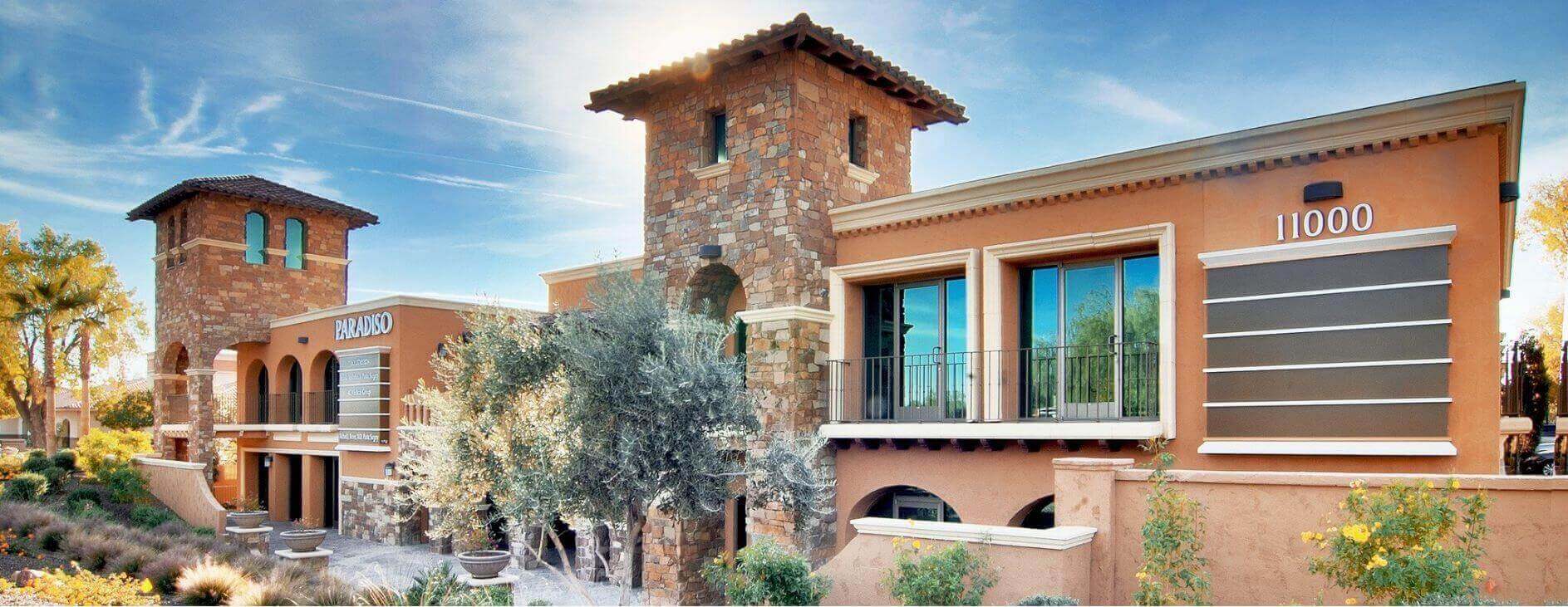Keloid Scars and Hypertrophic Scars
in Scottsdale, AZ
What is a Keloid Scar?
A keloid is a thick, raised area of skin that begins at the site of an injury or piercing and grows beyond the border of the injury. It is the overgrowth of scar tissue and rarely subsides on its own.
Keloid scars can develop around surgical scars, piercings, cuts and other injuries. They typically have a smooth, shiny appearance with a raised, rounded top that can vary in color from pink to dark purple. Keloids are irregularly shaped and tend to grow larger over a period of time. Unlike other types of scars, keloids do not fade or subside over time.
What is a Hypertrophic Scar?
Hypertrophic scars are scars that are wide and raised. They are typically red in color and are only slightly elevated above the skin. Unlike keloid scars, hypertrophic scars typically don’t spread outside of the incision or injury. It takes weeks for hypertrophic scars to develop and they will normally fade and subside over a period of time, ranging from a year or more.
Skin and Cancer Center of Scottsdale offers a variety of treatments for keloid scars and associated hypertrophic scars. Call the Skin and Cancer Center of Scottsdale at (480) 596-1110 to schedule an appointment.
How are Keloid and Hypertrophic Scars Treated?
Options for treating keloid and hypertrophic scars include the following:
- Topical steroid creams or ointments.
- Cortisone injections (steroids): Safe and only somewhat uncomfortable, injections are usually administered by a dermatologist or medical dermatology practitioner every 4 to 8 weeks to help flatten keloids
- Laser therapy can be used to help minimize redness and flatten the keloid.
- Silicone gel sheets can be worn continuously for a period of months to reduce a keloid. Results will vary.
- Freezing keloids with liquid nitrogen (cryotherapy) may help to flatten the scar.
- Surgery can be used to remove a keloid. However, there is a risk that another keloid will return in the same area. Surgical removal is usually combined with other treatment, like steroid injections, to hopefully avoid this complication.
- Some doctors have reported safe and effective use of radiation to treat keloids.
What are the Risks?
Aside from surgical treatment, keloid and hypertrophic scar treatments are safe for most patients. Most treatments require multiple treatments or long periods of time to see results. Results vary from patient to patient.
To explore your treatment options for a keloid or hypertrophic scar, contact Skin and Cancer Center of Scottsdale at (480) 596-1110 and schedule an appointment.
Get In Touch
"*" indicates required fields
3 Convenient Locations to Serve You
Skin & Cancer Center of Scottsdale is proud to serve our patients with three convenient locations in Scottsdale, Maricopa, and Carefree, Arizona. Whether you’re seeking advanced skincare solutions or routine evaluations and treatments, our experienced team is here to provide exceptional care close to home. Let us help you achieve your healthiest, most radiant skin in a location that best fits your lifestyle.
Scottsdale, AZ:
11000 North Scottsdale Road Suite #245
Scottsdale, AZ 85254
Carefree, AZ:
36800 North Sidewinder Rd. Suite A-2
Carefree, AZ 85377
Maricopa, AZ:
19756 North John Wayne Pkwy. Suite 101
Maricopa, AZ 85139

